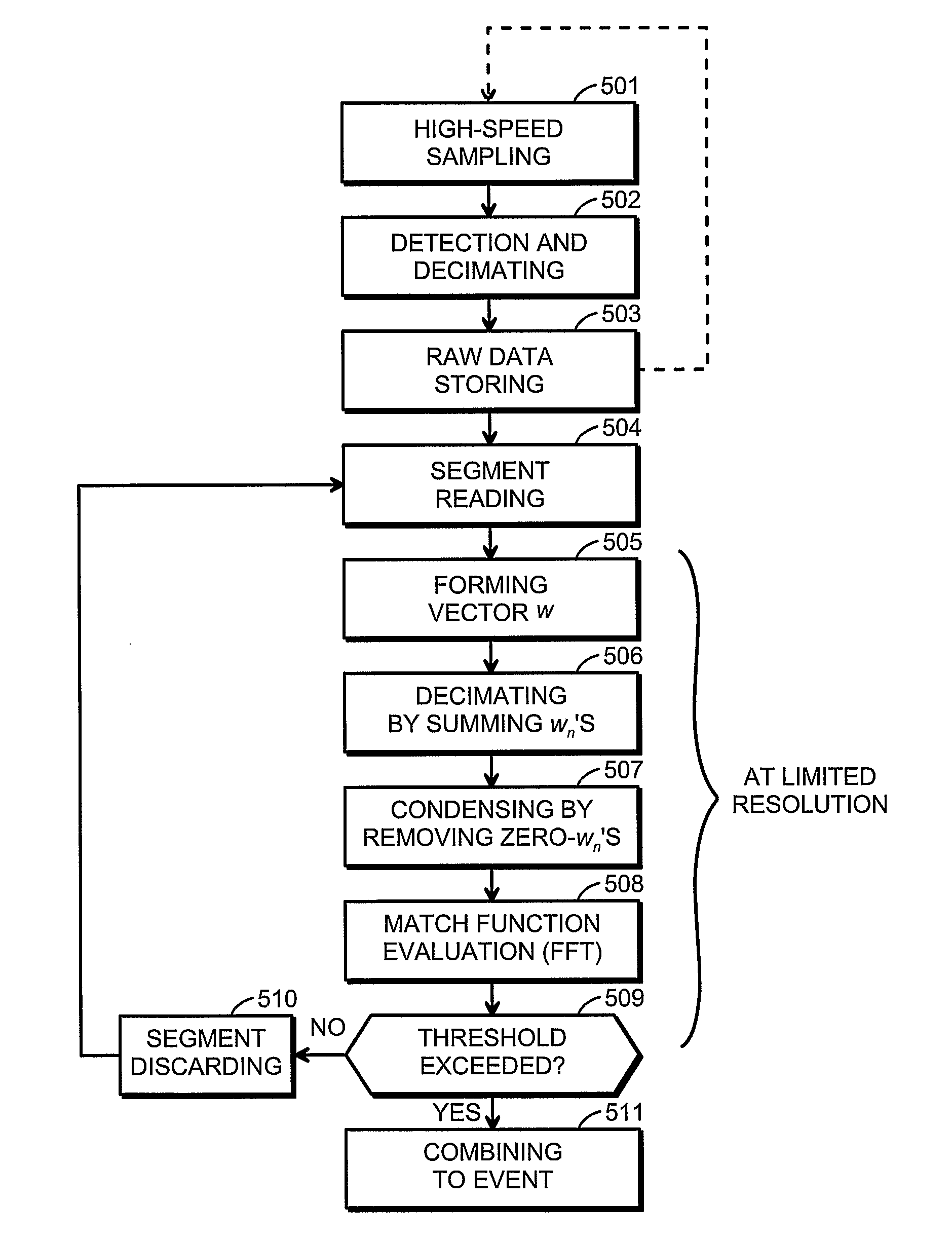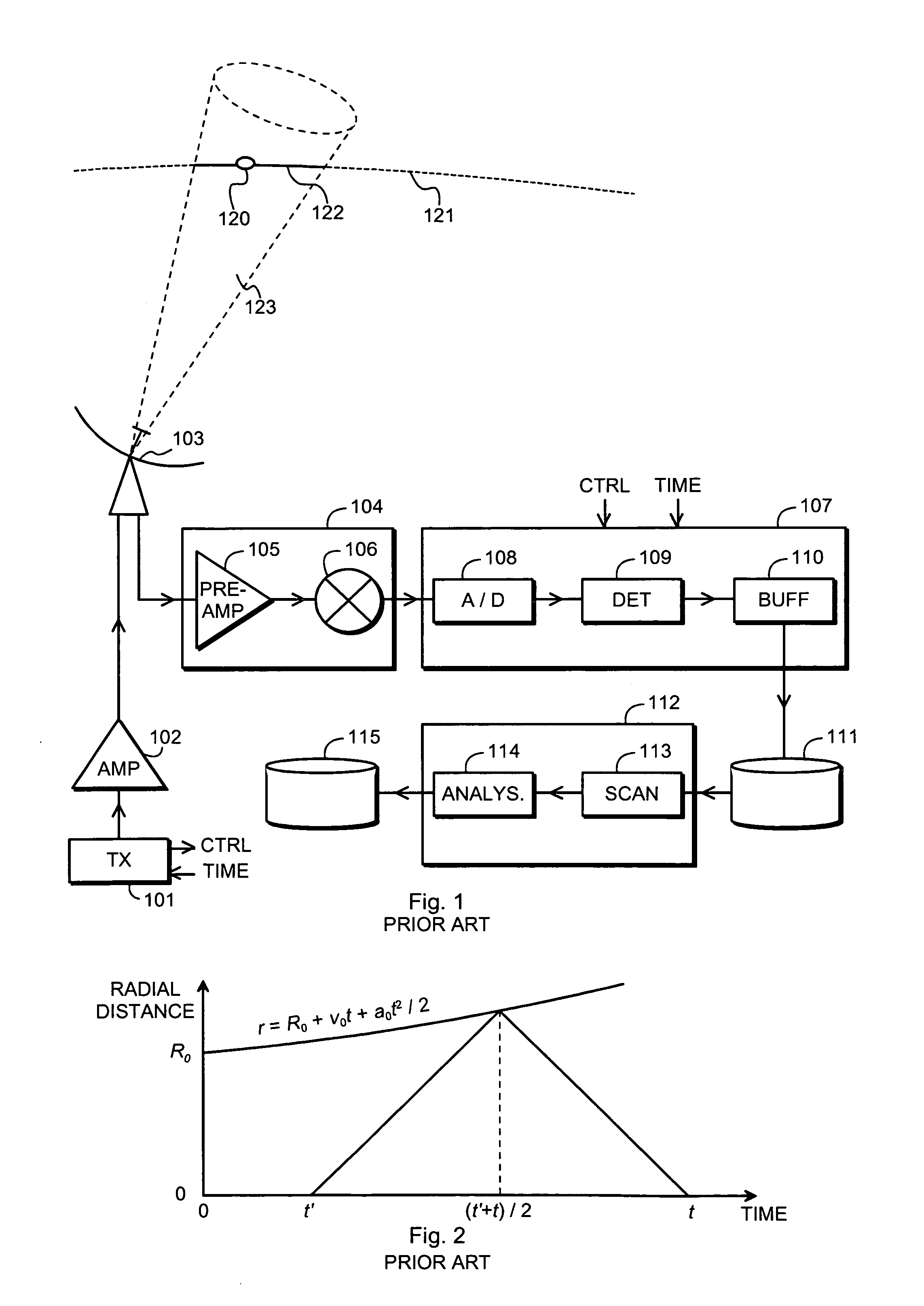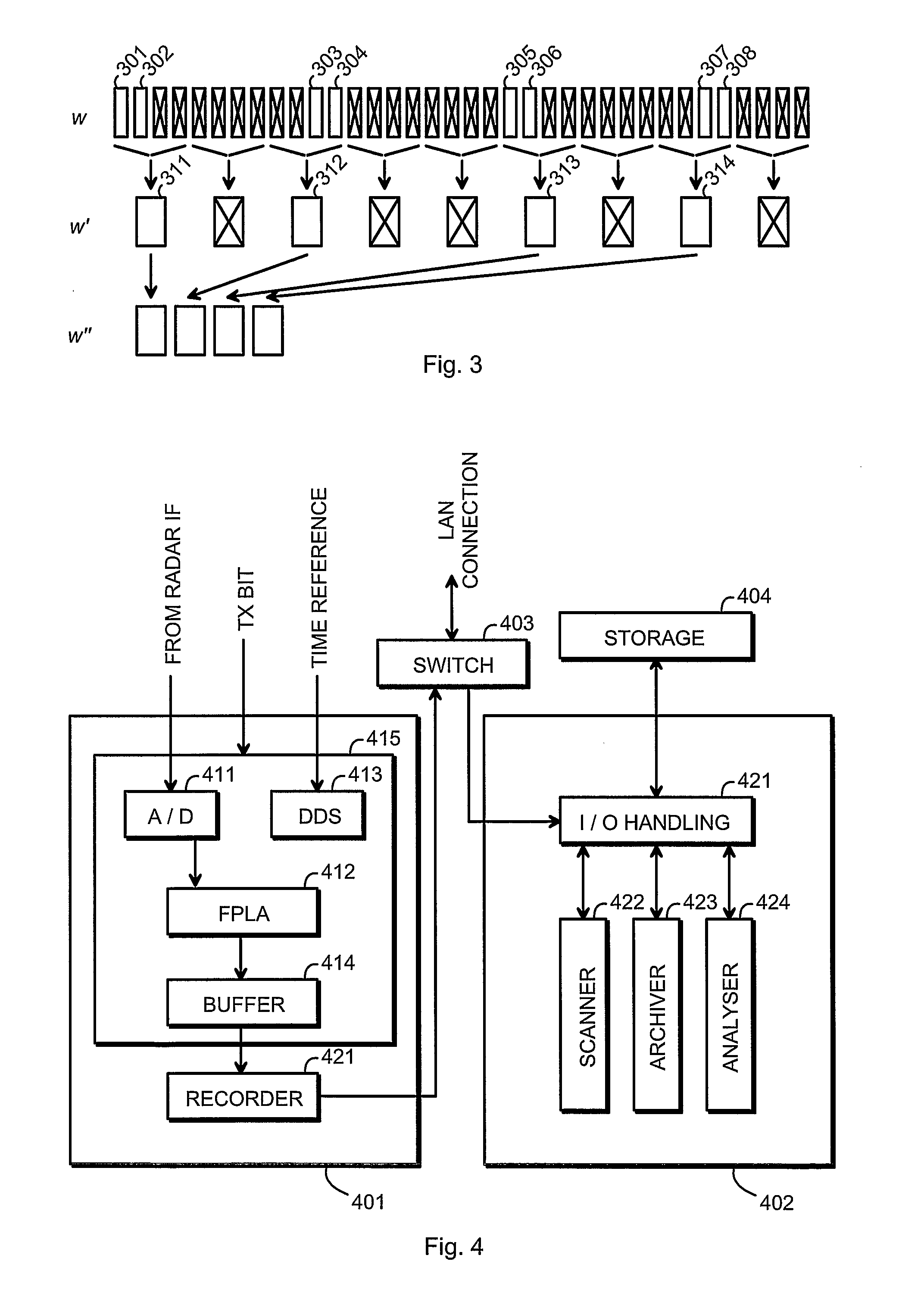Method and arrangement for detecting moving objects with a radar
a technology of moving objects and radars, applied in the field of radar measurements, can solve the problems of fragmented information of smaller particles, mainly statistical, and unsuitable for measuring echoes from hard targets,
- Summary
- Abstract
- Description
- Claims
- Application Information
AI Technical Summary
Benefits of technology
Problems solved by technology
Method used
Image
Examples
Embodiment Construction
Mathematical Derivation
[0026]The task of using a radar measurement to detect a distant moving object can be described simply as transmitting a known signal x(t) and finding the (best estimate of the) appropriate parameters of a hard target echo signal s(t) in the presence of gaussian noise γ(t). A received signal z(t) is a sum
z(t)=s(t)+γ(t) (1)
and all mentioned quantities can be treated as complex-valued (detected) waveforms.
[0027]Using statistical inversion means that we use a parameterized model for the signal s(t) and find the most probable signal among a number of model signals, given the measured signal z(t).
[0028]Before making further assumptions about the model signals we only assume that a model signal depends linearly on the complex amplitude b and nonlinearly on some other parameters, which are collectively denoted by θ. In other words, our assumption about the correct, noise-free target echo signal has the form
s(t)=b·χ(θ;t). (2)
[0029]We sample the received signal z(t) u...
PUM
 Login to View More
Login to View More Abstract
Description
Claims
Application Information
 Login to View More
Login to View More - R&D
- Intellectual Property
- Life Sciences
- Materials
- Tech Scout
- Unparalleled Data Quality
- Higher Quality Content
- 60% Fewer Hallucinations
Browse by: Latest US Patents, China's latest patents, Technical Efficacy Thesaurus, Application Domain, Technology Topic, Popular Technical Reports.
© 2025 PatSnap. All rights reserved.Legal|Privacy policy|Modern Slavery Act Transparency Statement|Sitemap|About US| Contact US: help@patsnap.com



